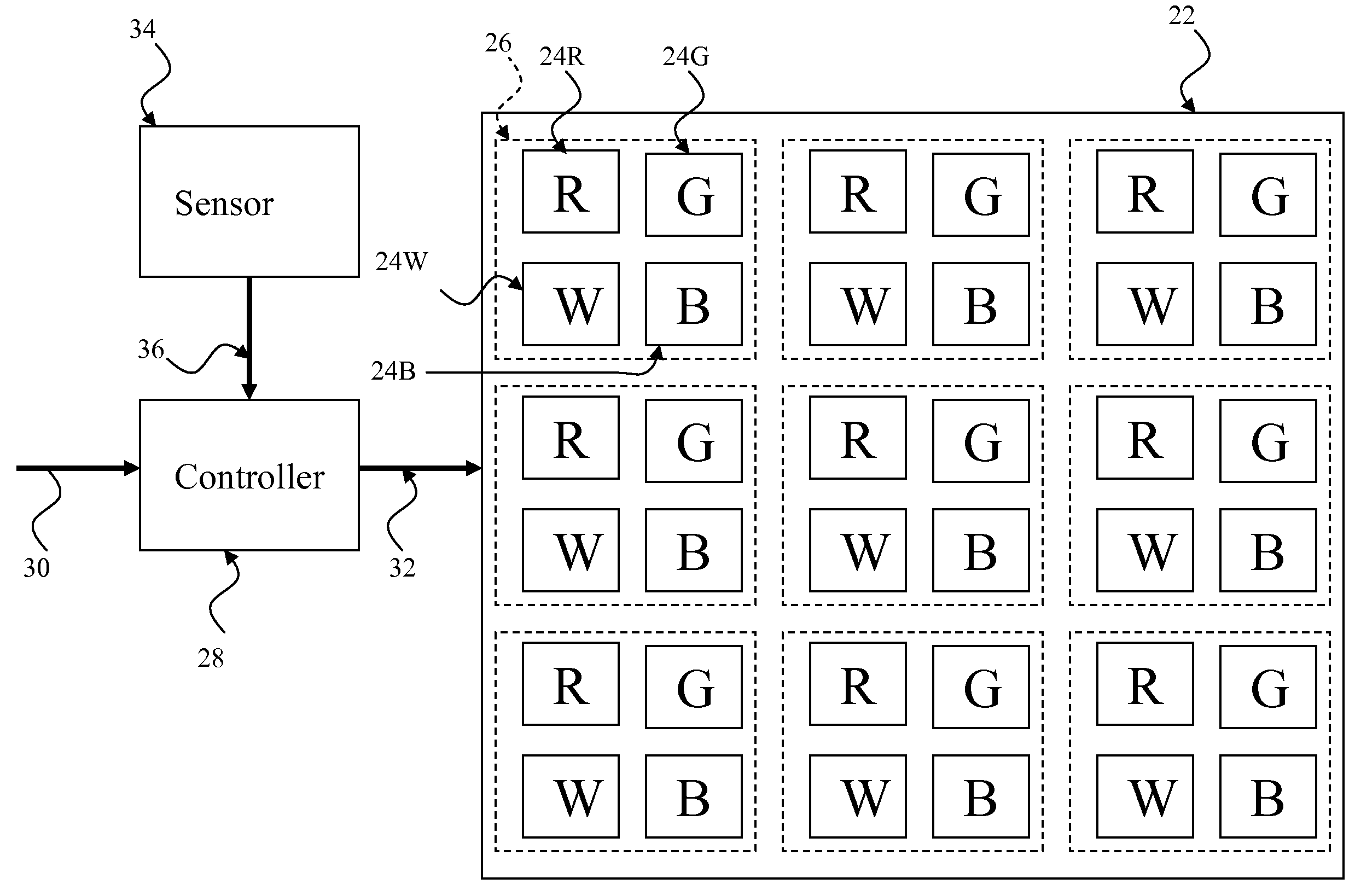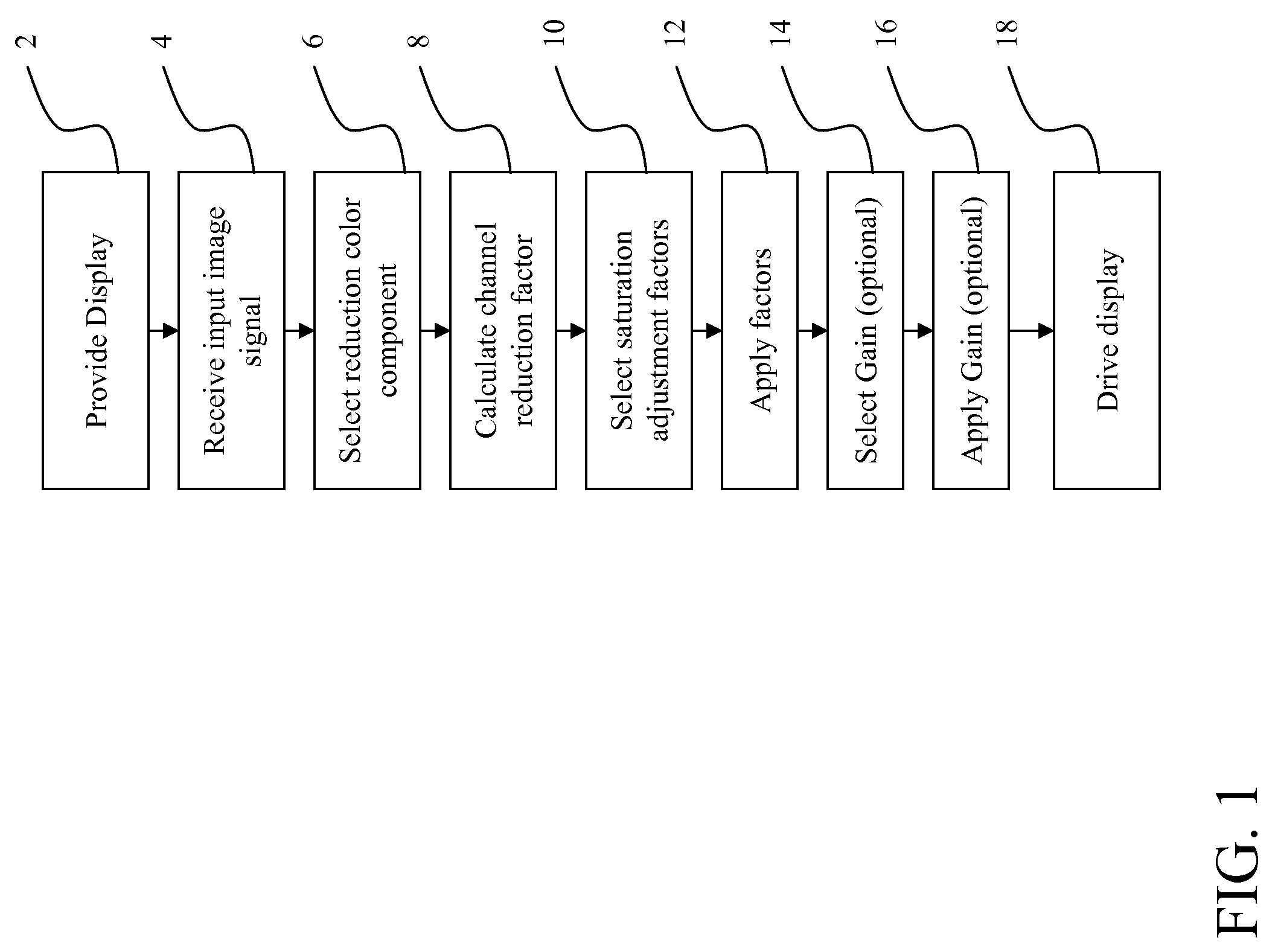Four-channel display power reduction with desaturation
a technology of desaturation and display power reduction, applied in the field of image processing techniques, can solve the problems of reducing the power of emissive displays under other conditions, increasing manufacturing costs, and increasing manufacturing costs, and reducing the power of displays
- Summary
- Abstract
- Description
- Claims
- Application Information
AI Technical Summary
Benefits of technology
Problems solved by technology
Method used
Image
Examples
Embodiment Construction
[0027]A method is provided for presenting an image on a display having color channel dependent light emission to reduce the power consumption of the display. This method includes the steps shown in FIG. 1. As shown an image input signal is received 2. This image input signal includes a plurality of input pixel signals, each input pixel signal having three color components. A reduction color component is selected 4 for reduction. A reduction factor is calculated 6 for each input pixel signal dependent upon a distance metric between the input pixel signal and the selected reduction color component. A respective saturation adjustment factor is selected 8 for each color component of each pixel signal. An image output signal is produced 10 having four color components from the image input signal using the reduction factors and saturation adjustment factors to adjust the luminance and color saturation, respectively, of the image input signal. A four-channel emissive display device is prov...
PUM
 Login to View More
Login to View More Abstract
Description
Claims
Application Information
 Login to View More
Login to View More - R&D
- Intellectual Property
- Life Sciences
- Materials
- Tech Scout
- Unparalleled Data Quality
- Higher Quality Content
- 60% Fewer Hallucinations
Browse by: Latest US Patents, China's latest patents, Technical Efficacy Thesaurus, Application Domain, Technology Topic, Popular Technical Reports.
© 2025 PatSnap. All rights reserved.Legal|Privacy policy|Modern Slavery Act Transparency Statement|Sitemap|About US| Contact US: help@patsnap.com



